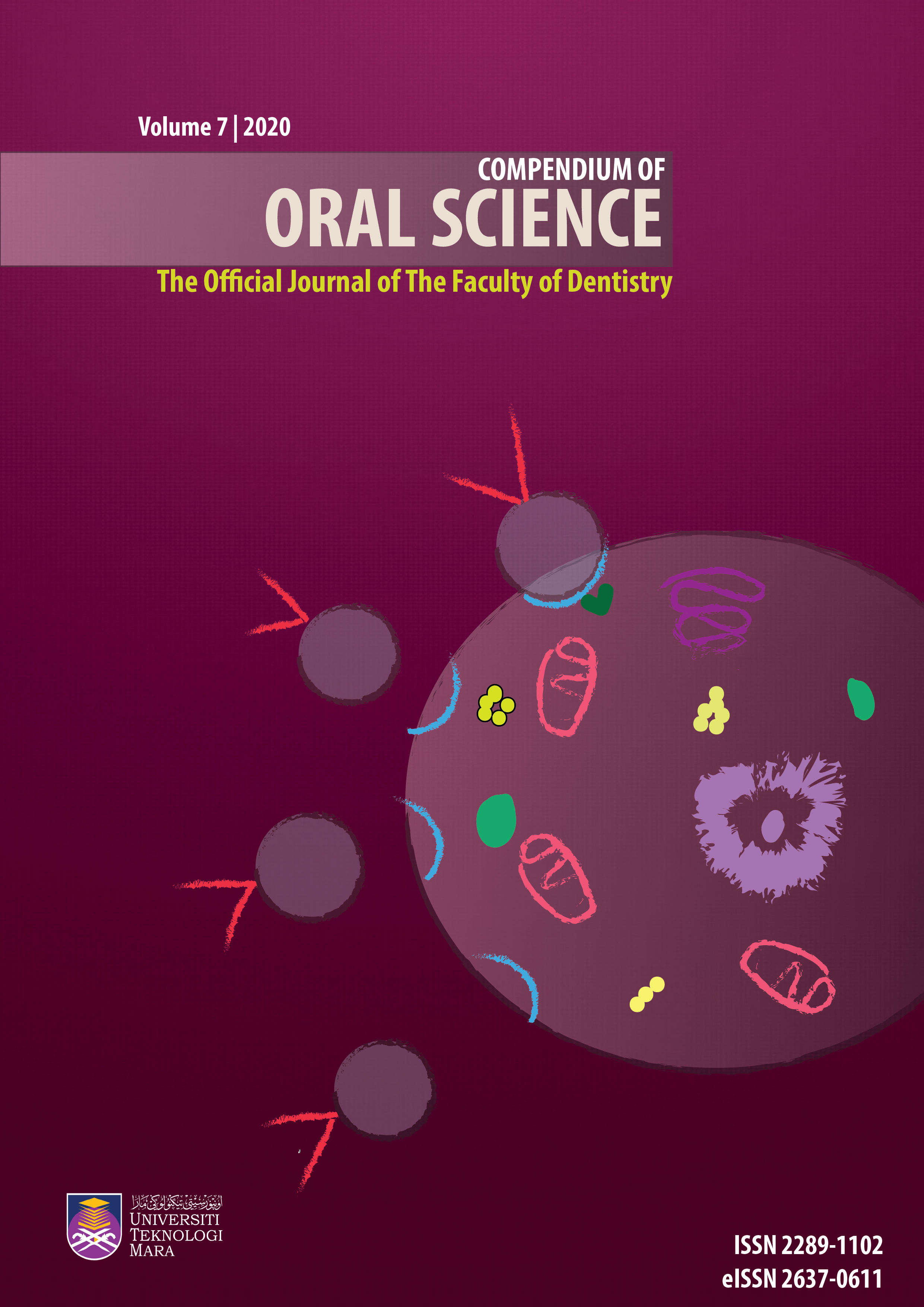Evaluation of Image Quality of Bitewing Radiographs taken by UiTM Dental Students
DOI:
https://doi.org/10.24191/cos.v7i0.17492Keywords:
bitewing radiograph, undergraduate dental students, caries, horizontal overlapping, radiographic diagnosisAbstract
Objectives: To evaluate the quality of bitewing radiograph taken by Universiti Teknologi MARA (UiTM) dental students during daily clinical practices and to evaluate the difference in caries lesions found on bitewing radiographs and clinical examination. Materials and method: 120 patients who attended the undergraduate dental clinic for dental examination were included in this study. The inclusion criteria were patients within the age range of 17-45 years old, possessing at least three sets of posterior teeth, with bitewing radiographs taken by undergraduate dental students. The number of caries lesions detected by clinical examination, bitewing radiographs, and a combination of both methods were recorded. The quality of 240 bitewing radiographs was classified into three categories; excellent, acceptable, and unacceptable. The frequency of radiographic errors; foreshortening/elongation, horizontal overlapping, inadequate film coverage, non-ideal centering and inadequate contrast and density were also evaluated. Results: The quality of bitewing radiographs are mostly accepted to be used as a diagnostic tool and one of the factors which commonly affected the quality of the bitewing is the overlapping of adjacent teeth. The highest number of caries lesions were detected radiographically (74%) compared with 25% caries by clinical examination. The majority of radiographs (71%, n=171) were deemed to be of acceptable quality, 39(16%) were excellent, and 30(13%) were diagnostically unacceptable. “Horizontal overlap” was the most common error detected on the radiographs (n=139, 57.9%), followed by “non-ideal centering” (n=93, 38.8%), “inadequate contrast” (n=46, 19.2%) and “inadequate film coverage” (n=24,10%). The highest number of caries lesions were detected radiographically (74%) compared with 25% caries by clinical examination. Conclusion: The quality of the majority of bitewing radiographs taken by undergraduate dental students in this institution is acceptable. However, given that more than half of the radiographs possessed horizontal overlapping error, caries diagnosis may have been underestimated. Further training and periodic audits are required to reduce the percentage of errors in bitewing radiographs amongst undergraduate dental students.
Downloads
Published
How to Cite
Issue
Section
License
Copyright (c) 2024 Compendium of Oral Science

This work is licensed under a Creative Commons Attribution-NonCommercial 4.0 International License.
Materials contained in the journal may be reproduced for educational purposes provided that both the author(s) and the journal are appropriately recognised; otherwise duplication is not permitted. No articles, reports, or portions there of may be translated into other languages, published in books, journals, magazines, or any other print form without written permission from the authors and from the journal.
Disclaimer: The statements, opinions and data expressed in the articles and reports herein are those of the author(s) and not of the publisher and the editor(s). The publisher and the editor(s) disclaim responsibility for any injury to persons or property resulting from any schemes, methods, instructions or ideas referred to in the content.















